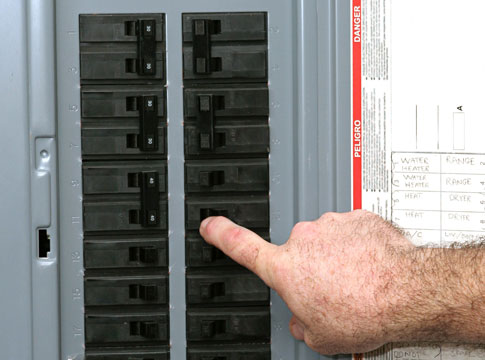We regularly receive reports of power outages that are actually a tripped breaker on the customer's circuit panel. If we respond after-hours to reset your breaker, you may be charged a $150 call-out fee. Checking your circuit panel for tripped breakers before reporting an outage can save you hassle and money.
If a circuit overloads or shorts, the breaker will trip and cut power to prevent fire and possible electrocution. Resetting a breaker is simple, if you know how, and doing so will restore power to the room(s) affected if there isn't an outage.
A step-by-step guide to safely resetting your circuit breakers
1. Locate your circuit panel
The first thing you should do is know the location of your circuit breaker panel. Often times it is located in the garage or on the other side of the wall from where your electric meter is located.
2. Light switches
Turn off light switches and unplug appliances in all rooms without power.
3. Circuit panel
Go to your circuit panel and open the cover.
4. Locate the tripped circuit breaker
Circuit breakers are small, usually horizontal switches that may be labeled (e.g. Kitchen, bathroom, water heater, etc.). The tripped breaker will be in the "off" position or in a middle position between "on" and "off." Tripped breakers are easily identified by the orange flag that appears when they are in the tripped position.
5. Reset the breaker
Move the breaker to the full "off" position and then back to "on." That should clear an overload and return power to the room(s).
6. Breaker re-trips
If the breaker re-trips, it could be for a number of reasons: too many lamps and appliances plugged into a single circuit; a damaged cord or plug; a short circuit in a receptacle, switch or fixture; or even faulty wiring.
Warnings:
- If a breaker continues to re-trip, you should call an electrician.
- When resetting a breaker, use only one hand and stand to the side to avoid electrical arcing if the breaker should malfunction.
- Working with electrical systems is potentially dangerous. If you're unsure of your abilities or about any aspect of the job, call an electrician.


